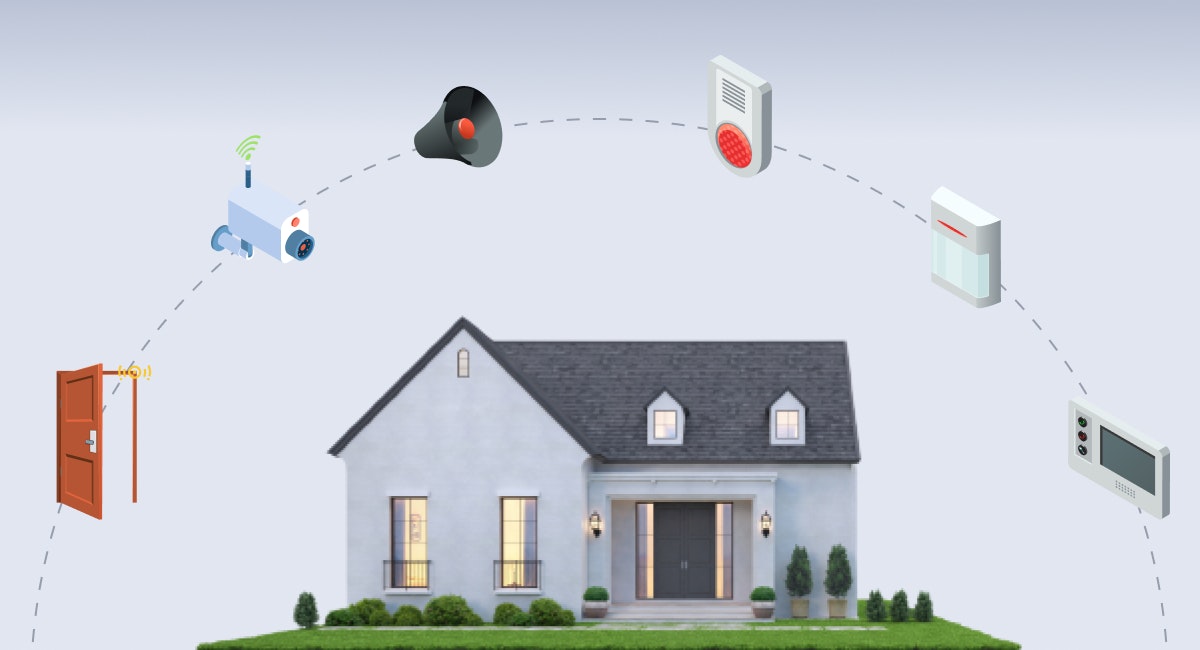As we dive headfirst into the world of smart home automation, it’s easy to get caught up in the excitement of voice-activated vacuum cleaners and gesture-controlled lighting. But amidst all the innovation and convenience, a crucial question lingers: how do you protect your smart home from cyber threats?

IoT-Based Home Security System: Benefits, Examples & Devices
The Internet of Broken Things
Smart home automation is an inherently complex system, comprised of interconnected devices that rely on wireless networks to function. It’s like trying to navigate a maze blindfolded while being attacked by a swarm of bees – each new device adds another potential entry point for hackers.
The IoT Security Nightmare
Research suggests that up to 30% of smart home devices are vulnerable to hacking, with malicious actors exploiting weaknesses in protocols like Wi-Fi and Bluetooth. This means your beloved Philips Hue bulbs could be broadcasting your entire address book to the world – all because someone managed to crack their encryption.
The Anatomy of an IoT Security Breach
So, how does this happen? It’s often a combination of factors: a poorly secured router, an insecure update process for devices, and a general lack of awareness among users. But don’t worry – we’re about to dissect the anatomy of an IoT security breach like a neurosurgeon examining the human brain.
Step 1: The Entry Point
The first step in any cyber attack is finding an entry point into your system. This can be as simple as a weak password or an open port on your router. Think of it like trying to get into your high school – you need a key, and that key is often a combination of your social status, physical appearance, and ability to remember the combination.
Step 2: The Malware Infiltration
Once an attacker has gained access to your network, they’ll begin scanning for vulnerable devices. This is like searching for a needle in a haystack – except instead of a needle, it’s a smart home device with a gaping hole in its security.
The Malware Infiltration: A Case Study
A recent example of this phenomenon was the “Mirai” botnet attack. Mirai, short for ‘marauder in peace’, was a swarm of compromised IoT devices used to take down major American companies’ DNS servers. It’s like a digital equivalent of a zombie apocalypse – except instead of flesh-eating monsters, it’s millions of vulnerable smart home devices.

IoT Security: The Smart House Nightmares – Akitra
Step 3: The Data Heist
Now that the attacker has gained access to your network and compromised one or more devices, they’ll begin siphoning off sensitive data. This can include everything from personal identifiable information (PII) to financial records – basically anything that’s not nailed down.
The Data Heist: A Real-World Example
A high-profile example of this was the 2013 hack on the Sony Pictures Entertainment network, where hackers stole millions of sensitive documents and emails. It’s like someone took a giant pair of bolt cutters to your company’s confidential files – not exactly what you’d call ‘smart home automation’ at its finest.
Securing Your Smart Home: A Guide for the Perplexed
So, how do you protect yourself from these cyber threats? It’s like building a digital fortress – except instead of stone walls and moats, it’s 256-bit encryption and regular firmware updates. Here are some practical tips to get you started:
Tips for IoT Security
- Change your router’s admin password regularly (think of it as updating your driver’s license – except instead of a photo, it’s a secure protocol).
- Update firmware on all devices as soon as possible (it’s like getting a digital flu shot – except instead of the flu, it’s malware).
- Use strong, unique passwords for each device (think of it as encrypting your secrets – except instead of a secret code, it’s a combination lock).
- Regularly scan your network for vulnerabilities (it’s like doing a digital health check – except instead of a blood pressure reading, it’s a firmware update).
Conclusion: The Future of Smart Home Automation
Smart home automation is an exciting space, full of innovation and potential. But as we continue to build our smart homes, we must also acknowledge the risks involved. By following these simple tips and staying vigilant, you can ensure that your IoT paradise remains secure – and so much more than just a digital playground.
The Future of Smart Home Automation: A Bright Horizon
As technology continues to advance, we’ll see an increased focus on IoT security. This might come in the form of advanced threat detection systems or even AI-powered intrusion prevention tools – basically anything that helps us keep our smart homes safe from cyber threats.
The Bottom Line: Stay Vigilant, Stay Secure
Smart home automation is here to stay, and with it comes a host of security risks. By understanding the anatomy of an IoT security breach and following simple tips for securing your devices, you can ensure that your smart home remains a secure and enjoyable environment – not just for you, but for generations to come.
Stay safe out there, folks! 🤖

The Smart Home Revolution: How IoT Is Transforming Modern Living …

Latest news – Resillion

Smart Homes, Vulnerable Lives: Protecting Your Digital Fortress
